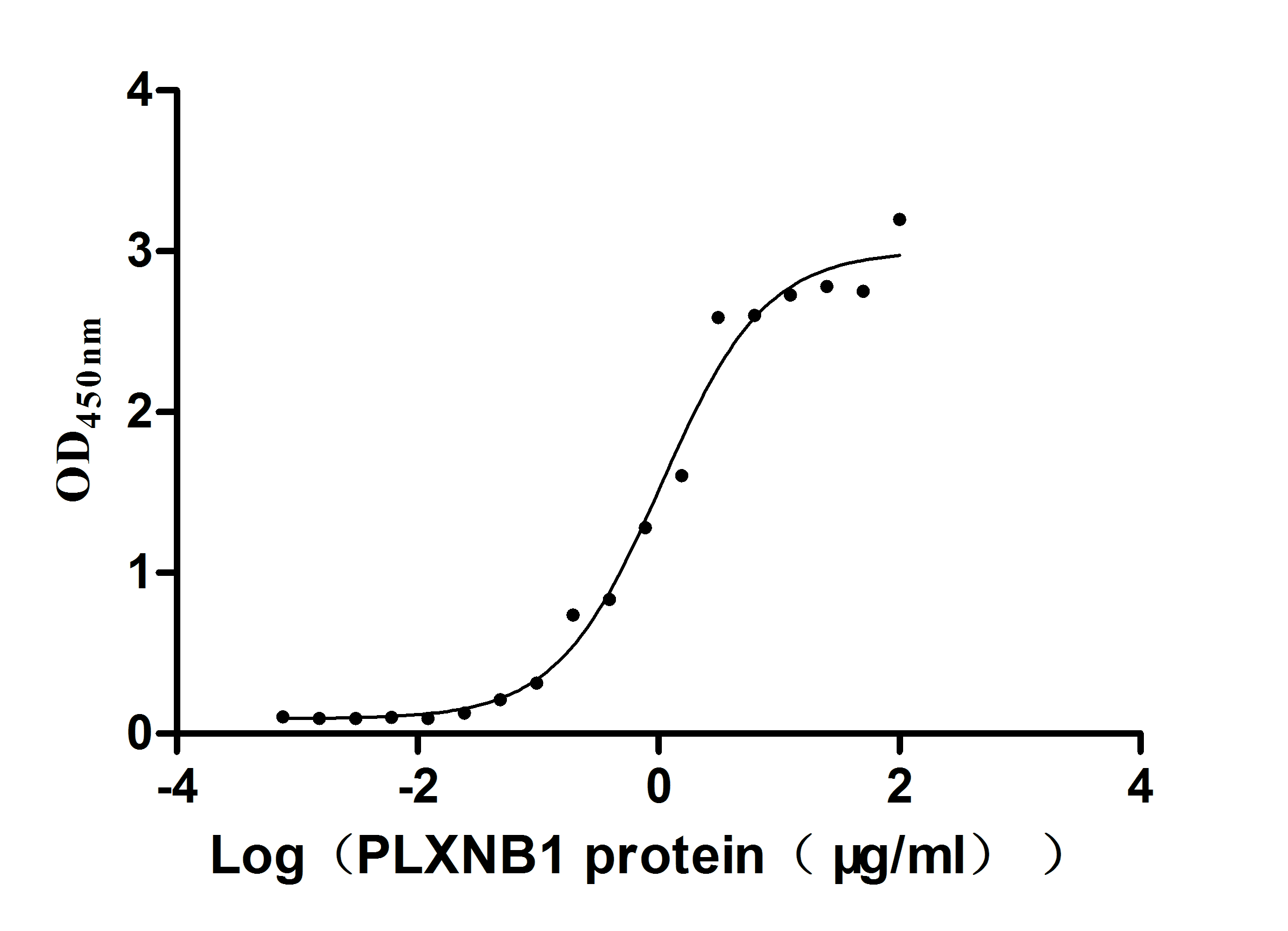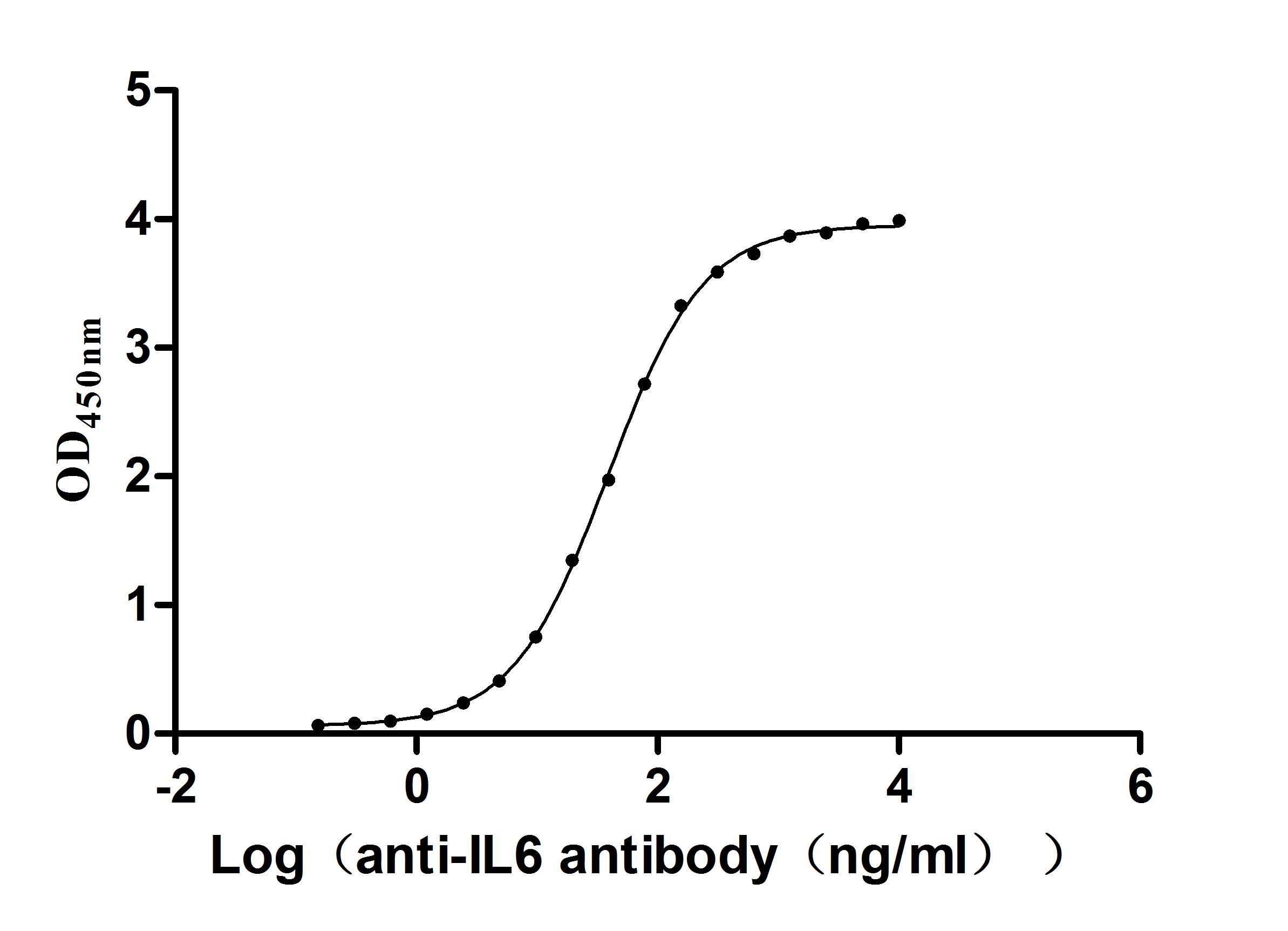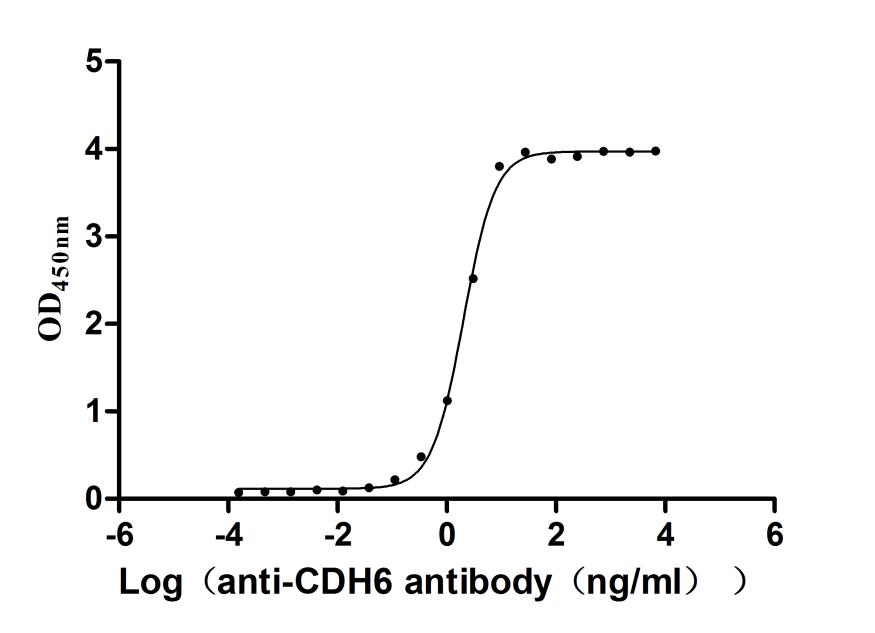Recombinant Mouse Protein-tyrosine kinase 6 (Ptk6)
-
中文名称:小鼠Ptk6重组蛋白
-
货号:CSB-YP714492MO
-
规格:
-
来源:Yeast
-
其他:
-
中文名称:小鼠Ptk6重组蛋白
-
货号:CSB-EP714492MO
-
规格:
-
来源:E.coli
-
其他:
-
中文名称:小鼠Ptk6重组蛋白
-
货号:CSB-EP714492MO-B
-
规格:
-
来源:E.coli
-
共轭:Avi-tag Biotinylated
E. coli biotin ligase (BirA) is highly specific in covalently attaching biotin to the 15 amino acid AviTag peptide. This recombinant protein was biotinylated in vivo by AviTag-BirA technology, which method is BriA catalyzes amide linkage between the biotin and the specific lysine of the AviTag.
-
其他:
-
中文名称:小鼠Ptk6重组蛋白
-
货号:CSB-BP714492MO
-
规格:
-
来源:Baculovirus
-
其他:
-
中文名称:小鼠Ptk6重组蛋白
-
货号:CSB-MP714492MO
-
规格:
-
来源:Mammalian cell
-
其他:
产品详情
-
纯度:>85% (SDS-PAGE)
-
基因名:Ptk6
-
Uniprot No.:
-
别名:Ptk6; Sik; Protein-tyrosine kinase 6; EC 2.7.10.2; SRC-related intestinal kinase
-
种属:Mus musculus (Mouse)
-
蛋白长度:full length protein
-
表达区域:1-451
-
氨基酸序列MVSWDKAHLG PKYVGLWDFK ARTDEELSFQ AGDLLHVTKK EELWWWATLL DAEGKALAEG YVPHNYLAEK ETVESEPWFF GCISRSEAMH RLQAEDNSKG AFLIRVSQKP GADYVLSVRD AQAVRHYRIW KNNEGRLHLN EAVSFSNLSE LVDYHKTQSL SHGLQLSMPC WKHKTEPLPH WDDWERPREE FTLCKKLGAG YFGEVFEALW KGQVHVAVKV ISRDNLLHQH TFQAEIQAMK KLRHKHILSL YAVATAGDPV YIITELMPKG NLLQLLRDSD EKALPILELV DFASQVAEGM CYLESQNYIH RDLAARNVLV TENNLCKVGD FGLARLVKED IYLSHEHNVP YKWTAPEALS RGHYSIKSDV WSFGVLLHEI FSRGQMPYPG MSNHETFLRV DAGYRMPCPL ECPPNIHKLM LSCWSRDPKQ RPCFKDLCEK LTGITRYENL V
-
蛋白标签:Tag type will be determined during the manufacturing process.
The tag type will be determined during production process. If you have specified tag type, please tell us and we will develop the specified tag preferentially. -
产品提供形式:Lyophilized powder
Note: We will preferentially ship the format that we have in stock, however, if you have any special requirement for the format, please remark your requirement when placing the order, we will prepare according to your demand. -
复溶:We recommend that this vial be briefly centrifuged prior to opening to bring the contents to the bottom. Please reconstitute protein in deionized sterile water to a concentration of 0.1-1.0 mg/mL.We recommend to add 5-50% of glycerol (final concentration) and aliquot for long-term storage at -20℃/-80℃. Our default final concentration of glycerol is 50%. Customers could use it as reference.
-
储存条件:Store at -20°C/-80°C upon receipt, aliquoting is necessary for mutiple use. Avoid repeated freeze-thaw cycles.
-
保质期:The shelf life is related to many factors, storage state, buffer ingredients, storage temperature and the stability of the protein itself.
Generally, the shelf life of liquid form is 6 months at -20°C/-80°C. The shelf life of lyophilized form is 12 months at -20°C/-80°C. -
货期:Delivery time may differ from different purchasing way or location, please kindly consult your local distributors for specific delivery time.Note: All of our proteins are default shipped with normal blue ice packs, if you request to ship with dry ice, please communicate with us in advance and extra fees will be charged.
-
注意事项:Repeated freezing and thawing is not recommended. Store working aliquots at 4°C for up to one week.
-
Datasheet :Please contact us to get it.
靶点详情
-
功能:Non-receptor tyrosine-protein kinase implicated in the regulation of a variety of signaling pathways that control the differentiation and maintenance of normal epithelia, as well as tumor growth. Function seems to be context dependent and differ depending on cell type, as well as its intracellular localization. A number of potential nuclear and cytoplasmic substrates have been identified. These include the RNA-binding proteins: KHDRBS1/SAM68, KHDRBS2/SLM1, KHDRBS3/SLM2 and SFPQ/PSF; transcription factors: STAT3 and STAT5A/B and a variety of signaling molecules: ARHGAP35/p190RhoGAP, PXN/paxillin, BTK/ATK, STAP2/BKS. Associates also with a variety of proteins that are likely upstream of PTK6 in various signaling pathways, or for which PTK6 may play an adapter-like role. These proteins include ADAM15, EGFR, ERBB2, ERBB3 and IRS4. In normal or non-tumorigenic tissues, PTK6 promotes cellular differentiation and apoptosis. In tumors PTK6 contributes to cancer progression by sensitizing cells to mitogenic signals and enhancing proliferation, anchorage-independent survival and migration/invasion. Association with EGFR, ERBB2, ERBB3 may contribute to mammary tumor development and growth through enhancement of EGF-induced signaling via BTK/AKT and PI3 kinase. Contributes to migration and proliferation by contributing to EGF-mediated phosphorylation of ARHGAP35/p190RhoGAP, which promotes association with RASA1/p120RasGAP, inactivating RhoA while activating RAS. EGF stimulation resulted in phosphorylation of PNX/Paxillin by PTK6 and activation of RAC1 via CRK/CrKII, thereby promoting migration and invasion. PTK6 activates STAT3 and STAT5B to promote proliferation. Nuclear PTK6 may be important for regulating growth in normal epithelia, while cytoplasmic PTK6 might activate oncogenic signaling pathways.
-
基因功能参考文献:
- PTK6 may act as a novel mediator of TNFalpha/IFNgamma intestinal epithelial permeability during inflammatory injury, and miR-93 may protect intestinal epithelial barrier function, at least in part, by targeting PTK6 PMID: 27119373
- PTK6 prolongs S-phase and increases the ability of gemcitabine to cause DNA damage in vitro and in vivo PMID: 26013168
- Ptk6 promotes ERBB2-induced mammary gland tumorigenesis in the mouse. PMID: 26247733
- PTK; expression increases in epidermis following UVB. indicates tumorigenesis in mouse skin. PMID: 25938342
- Protein tyrosine kinase 6 has a role in mediating TNFalpha-induced endothelial barrier dysfunction PMID: 25446122
- Protein tyrosine kinase 6 protects cells from anoikis by directly phosphorylating focal adhesion kinase and activating AKT. PMID: 23027128
- expression of Brk/PTK6 in non-transformed mammary epithelial cells mediates p38 MAPK phosphorylation and promotes increased cellular survival, delayed involution, and latent tumor formation. PMID: 21923922
- a novel function for PTK6 at the plasma membrane PMID: 22084245
- PTK6 promotes STAT3 activation in the colon following injection of the carcinogen azoxymethane and regulates STAT3 activity in mouse colon tumors. PMID: 21741923
- AKT is a direct substrate of PTK6 and AKT tyrosine residues 315 and 326 are phosphorylated by PTK6. PMID: 20606012
- PTK6 associates with nuclear and cytoplasmic beta-catenin and inhibits beta-catenin- and T-cell factor (TCF)-mediated transcription. PMID: 20026641
- The tyrosine kinases Brk/PTK6/Sik, Srm, Frk/Rak/Gtk/Iyk/Bsk, and Src42A/Dsrc41 have a low degree of sequence homology to other known kinases. The exon structure of these kinases, called the Brk family, is highly conserved and distinct. PMID: 12725532
- BRK plays a role in differentiation of prostate epithelial cells PMID: 12833144
- ability of tyrposine kinase BRK/Sik to negatively regulate the RNA-binding activities of the KH domain RNA binding proteins SLM-1 and Sam68 may have an impact on the posttranscriptional regulation of epithelial cell gene expression PMID: 15471878
- PTK6 contributes to maintenance of tissue homeostasis through negative regulation of Akt in the small intestine and is associated with cell cycle exit and differentiation in normal intestinal epithelial cells. PMID: 16782882
- Describe a conditionally immortalized colonic epithelial cell line from a Ptk6 null mouse that polarizes and differentiates in vitro. PMID: 18205771
- Brk was found to shorten the latency of ErbB2-induced tumors by promoting cell proliferation, with no effect on protection from apoptosis PMID: 18719096
显示更多
收起更多
-
亚细胞定位:Cytoplasm. Nucleus. Membrane. Cell projection, ruffle. Note=Also found to be membrane-associated. Colocalizes with KHDRBS1, within the nucleus.
-
蛋白家族:Protein kinase superfamily, Tyr protein kinase family, BRK/PTK6/SIK subfamily
-
组织特异性:Expressed only in epithelial tissues, including the skin and lining of the alimentary canal. Restricted to the cell layers immediately above the proliferative cell zone in these epithelia.
-
数据库链接:
KEGG: mmu:20459
STRING: 10090.ENSMUSP00000016511
UniGene: Mm.4497
Most popular with customers
-
Recombinant Human Plexin-B1 (PLXNB1), partial (Active)
Express system: Mammalian cell
Species: Homo sapiens (Human)
-
Recombinant Human Claudin-6 (CLDN6)-VLPs, Fluorescent (Active)
Express system: Mammalian cell
Species: Homo sapiens (Human)
-
Recombinant Human Glucagon-like peptide 1 receptor (GLP1R), partial (Active)
Express system: Mammalian cell
Species: Homo sapiens (Human)
-
Recombinant Human Early activation antigen CD69 (CD69), partial (Active)
Express system: Mammalian cell
Species: Homo sapiens (Human)
-
Recombinant Human Cadherin-17 (CDH17), partial (Active)
Express system: Mammalian cell
Species: Homo sapiens (Human)
-
Recombinant Rat Gastric inhibitory polypeptide receptor (Gipr), partial (Active)
Express system: Mammalian cell
Species: Rattus norvegicus (Rat)
-
-
Recombinant Mouse Cadherin-6(Cdh6),partial (Active)
Express system: Mammalian cell
Species: Mus musculus (Mouse)



f4-AC1.jpg)
















